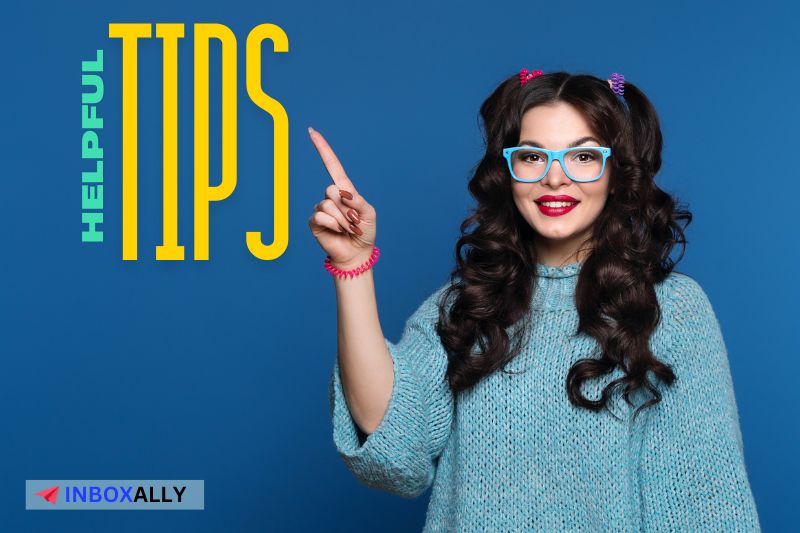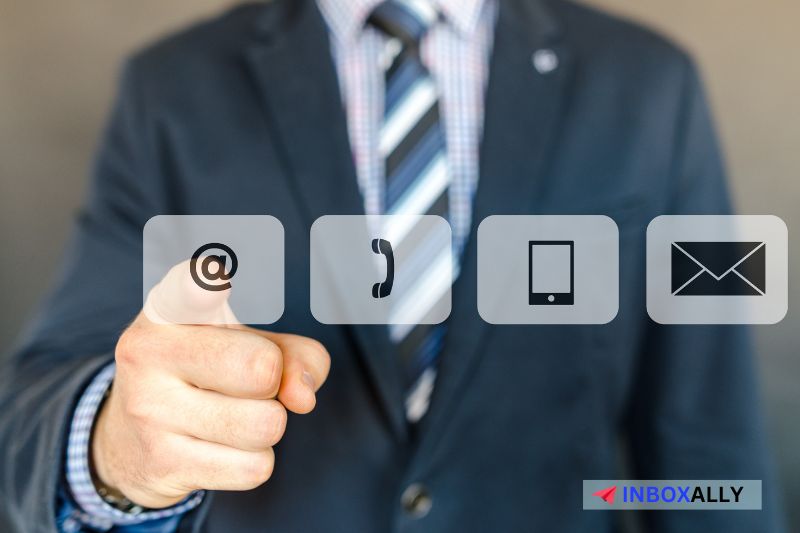Even though LinkedIn is one of the largest professional networking platforms, simply signing up for an account isn’t enough to get you in front of the right people. Whether it’s a dream job, a potential partnership, or a client, you must take the initiative and reach out. Cold messaging is one common way of doing this.
But how do you get started, what do you say, and is it really effective? These are common concerns when you begin LinkedIn cold messaging. We’re here to help you address each concern.
How Do You Start Cold Messaging on LinkedIn?
A cold outreach strategy can be intimidating. You never know how the prospect may respond or react. However, sending cold messages on LinkedIn doesn’t have to be so complicated.
Think of it as striking up a conversation but in a professional manner.
There are two main ways to do this. You can send a LinkedIn cold message for free using a basic account. But you’ll be limited to only messaging your connections. Alternatively, you can send a message to a prospect without a connection using InMail Messages.
InMail is a built-in messaging feature that is accessible through a LinkedIn premium account. The allowance of InMail messaging credits will vary based on your subscription plan. Keep in mind, however, that if a prospect opts out of receiving any InMail Message, this feature won’t be so helpful in that case.
But before you can even think of sending a LinkedIn cold message, here are a few things you need to do first:
- Optimize your LinkedIn profile. Your profile is the first thing your prospects will look at when they receive your message, so you must ensure it gives a good first impression.
- Be active on the platform. Share insightful content around your field of expertise, comment on other posts, and take part in debates. Doing this will help you appear more trustworthy to your prospects. It also helps warm up your account before you start cold messaging.
- Set your goals. Figure out what you want to achieve by a certain time frame. Ask yourself who you are targeting, what you’d like them to do, and, most importantly, what you’re offering them.
Once you’ve built a significant presence on LinkedIn and a clear on what you want to achieve, you’re ready to start sending cold LinkedIn messages using the following steps:
1. Create a List of Prospects
![]()
First, do your research to come up with genuine facts to build a persona that will help define your ideal prospects. Then go on LinkedIn and search for the people who meet the criteria of the prospect persona you built from your research. If you have a LinkedIn Sales Navigator subscription several tools can help. But you can also do it for free on your Basic account, simply:
- Go to the search bar in your LinkedIn account.
- Type the keywords that best relate to your ideal prospects (i.e. job title, industry, location, etc.).
- Select the most suitable prospects from the search results and add them to your list along with links to their profiles.
2. Research each prospect from your list.
You must follow a targeted approach for successful cold LinkedIn outreach campaigns. Take time to look through each prospect’s LinkedIn profile. Find out what they do and their experiences.
You can also search for them online by searching for their official website (especially for companies). These insights will help you understand how you can benefit them and create a more personalized message. You might even find their recent developments that would make great conversation starters.
3. Come up with a great cold message.
When it comes to cold outreach messages the first message you send is very important. It is the initial contact you’ll have with a prospect that sets the tone for later conversations. We’ll go into more detail on how to write the best LinkedIn cold messages in the next section.
Just keep in mind that the initial message should be short, simple, and to the point. Customize the LinkedIn message to the individual prospect. You can do this by specifying the industry, company name, role, etc.
4. Always Follow-Up
Most people overlook the importance of follow-up messages. The truth is people are busy so not getting a response the first time is common. That’s why a follow-up message is vital in reminding your prospects you reached out and showing them that you value their response.
On top of reminding them why you reached out, you can share more value on how your connection would benefit them. You can also try using a different Call to Action that they may be more interested in. But only send one follow-up message. If you still don’t get a response, you can assume that the prospect is busy or not interested, and move on.
5. Analyze your cold LinkedIn message campaign performance.
When you cold message on LinkedIn, it’s important to analyze how the campaign is performing. This will give you better insight into what you’re doing right and what needs to be improved. You can use a LinkedIn automation tool or you can manually record the metrics on a simple software like Microsoft Excel. Some key metrics you should look at include:
- Number of LinkedIn messages sent
- Positive response rate
- Negative response rate
- Neutral response rate
- Overall response rate, etc.
Tips for Writing LinkedIn Cold Messages that Get Replies
The following are some helpful tips to keep in mind when crafting your cold LinkedIn message:
Aim to build a relationship
The main aim of LinkedIn is to form connections and build networks. That should be your goal when writing your cold LinkedIn message. Keep in mind that people are less likely to respond to a sales pitch. So, focus more on starting up a conversation than pushing your product or service.
Don’t focus on yourself too much.
The biggest mistake you can make is focusing on yourself or what you do. While it is important to introduce yourself, people are more interested in what they stand to benefit from interacting with you.
So, as you write your cold outreach message, keep your introduction brief and make the rest of it all about your prospect. Offer them value by first figuring out their pain point. Then use that to talk about how you can offer them unique solutions or useful insights to help them.
Personalize each cold message.
Although having a LinkedIn cold message template can help you save time, personalized messages will get you more responses. People are more open to working with you if you show them that you understand them, their business, or their unique needs. So you need to do more than just specify their names.
Take time to research more on each prospect. Find out your prospect’s interests, past professional experiences, or if you share a mutual connection. These are all common grounds you can use to build rapport and show your interest in working with them. You can also look through their official websites and mention relevant company news and your insights on it.
Keep it short
If you’re wondering how long a cold LinkedIn message should be, consider that, unlike emails, this is an instant message. You’ll only have a few seconds of your prospect’s attention, so keep it simple and short. You can work with LinkedIn’s word limitation.
LinkedIn has a limit of 300-2000 characters (about 60-350 words) per message depending on whether you’re using a Basic or Premium account. That’s more than enough words for an initial conversation. Even so, don’t be abrasive. Maintain a professional but friendly tone, and offer value by focusing on the prospect’s needs and interests.
Have a clear call to action.
You should clearly tell your prospects what you want them to do after reading your message. This will help continue the conversation. Depending on your intention, you could suggest a brief phone call or an ideal date to meet or request their email for further conversation.
But only ask them to take one action to avoid overwhelming them. Keep in mind that the main point of cold messaging on LinkedIn is to establish initial communication with a prospect. Don’t pressure them by trying to make an immediate sale or close a deal.
There are many LinkedIn cold message examples to help inspire you, but you can find some of the best LinkedIn cold message templates to get you started here and here.
What is the Success Rate of Cold Messaging on LinkedIn?
People have reported successfully landing a job or finding qualified leads through cold LinkedIn messaging. Companies like Dux-soup report how LinkedIn has helped boost their clients’ lead generation efforts by increasing their sales appointments from 0 to over 100 in a matter of a few months.
This success, however, is not achieved by simply sending random cold messages to prospects. Certain factors play a role as well.
Aside from crafting a personalized, value-packed message, the timing is also crucial. For example, according to LinkedIn statistics, you’re 16% less likely to get a response from an InMail message you sent on Saturdays. The recommended time is between 9 AM and 10 AM on weekdays.
Your approach matters as well. Several people on the receiving end of these messages often complain since some messages come off as spammy and desperate. This can happen if you don’t take the time to connect with a prospect and simply go straight for the hard sell.
Based on LinkedIn’s statistics, you have a higher chance of getting a response if you and the prospect have a common ground or mutual connections. For example, you are 21% more likely to get a response from a prospect if you’re in the same LinkedIn group. 27% more likely to respond if you reference a common employer and 46% more likely if they are connected to someone who works with you. So, take time to really understand your prospects and connect with them on a personal level.
Cold Messaging: LinkedIn vs Email
When it comes to different cold messaging approaches both LinkedIn and emails are viable options with their unique advantages. Deciding which one is the best for you will depend on your outreach goals. But first, let’s understand how the two compare.
LinkedIn takes the lead when it comes to open rates and response rates. Based on statistics, the cold email open rate is 23.9% while the response rate is 8.5%, while InMail has a response rate of 18-25%. That’s because LinkedIn is a trusted professional platform and since InMail is a premium feature not as many people are using it to reach out to prospects.
Cold messages on LinkedIn are also less affected by deliverability issues compared to cold emails. As long as you have a connection with the prospect or are using the InMail feature, your message is guaranteed to land in the inbox. This isn’t always the case for cold emails.
Factors like email reputation, email content quality, bounce rates, etc. could easily land your cold email in the spam folder. Luckily there are ways to avoid this by following the best cold email practices and utilizing a good email deliverability tool like Inboxally, to always ensure the correct inbox placements.
However, LinkedIn also has its downsides. The biggest one is outreach limitations. With InMail you’re only allowed to send a maximum of 50 messages per month depending on your plan. Although you can send as many free LinkedIn direct messages, you are limited to only the people you have connections with. Since you can’t send more than 20-25 connection requests per day, this does limit your outreach.
With cold emailing, on the other hand, you can safely send over 100 emails per day. But ensure you take the time to properly warm up your email to avoid getting flagged as spam. Inboxally has a great feature that can help make this process easier.
Say Goodbye to Lengthy Warm-Up Periods! Our email warm-up service helps you build a strong reputation for your IP and domain faster than ever. By gradually increasing your email sends and leveraging our seed emails for engagement, you can quickly gain the trust of mailbox providers. Start your journey to better inbox placement and higher open rates today with InboxAlly.
So, when it boils down to it, LinkedIn would be a better approach if you are targeting a specific audience or group of professionals. Cold emails are better for a wider and budget-friendly outreach approach. Alternatively, you could get more out of combining your cold emails with LinkedIn messages. For more insight on how this is possible read our detailed guide on “Cold Email vs LinkedIn”
Master the Art of Cold Outreaches!
Mastering cold messaging on LinkedIn requires a thoughtful approach. Personalize each message by first building a connection through shared interests. Then focus on the prospect’s needs and how you can offer them value. Overall don’t expect instant responses – timing and patience are key in building relationships from cold outreaches.
You can also boost your LinkedIn cold messaging efforts by combining it with cold emailing. A tool like Inboxally can helo you enhance the effectiveness of your cold email campaign to compliment your LinkedIn strategy.
Experience the Power of InboxAlly with a Free 10-day Trial! Discover how InboxAlly can improve your email deliverability and engagement rates. With our free 10-day trial, you can see the results for yourself without any commitment. Start Your Free Trial Now.



